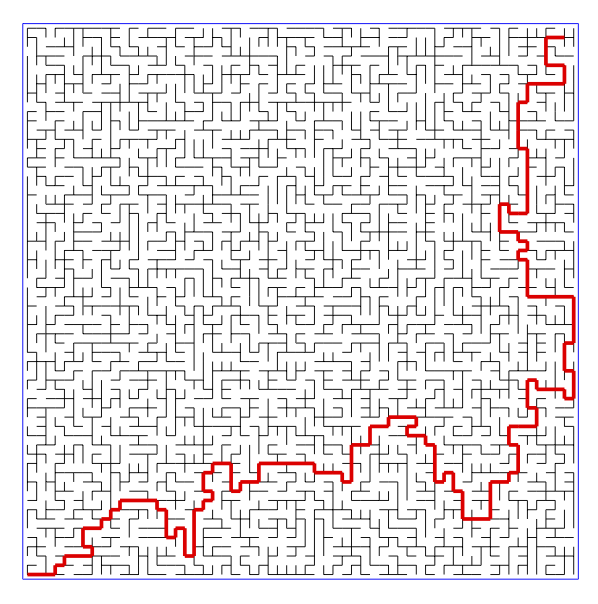Date: June 24 Friday, most likely
Choose a topic from the list below, and tell me your choice --- first come first served. You may also try to suggest a topic yourself. Aim for a presentation of 30 minutes, board or pdf. Make at least one practice run before your actual presentation, so that you see the timing. Keep the talks simple, don't try to cover everything that you have read about; rather, give just enough background and motivation that makes it possible to appreciate your topic, and prove at least one non-trivial statement. Make sure you understand every single sentence you are saying. The audience is encouraged to interrupt with questions. If you are not sure what to cover exactly in the talk, feel free to ask.
1. Biased random walks on the lamplighter group, a paper by R Lyons, R Pemantle, Y Peres (1996) .
2. The Liouville and strong Liouville property of harmonic functions on transitive graphs, especially lamplighters. Give an account of some of Section 9.2 of my PGG notes, and solve two exercises from there.
3. On any infinite transitive graph, SRW is at least diffusive. Lee-Peres (2009) Sections 1, 2, minus Subsection 2.1, plus try to solve Exercise 10.5 from my PGG notes. PGG Sections 10.1, 10.2 may contain explanations helping you understand the paper.

4. The Benjamini-Schramm limit of bounded degree finite planar graphs is always recurrent. This is the original Benjamini-Schramm paper (2000) where they introduced this limit notion. The beautiful proof uses circle packings (as on the picture to the right). Plus, solve PGG Exercise 14.1 or 14.15.
5. The Trotter-Virág proof of Wigner's semicircle law for the limiting eigenvalue distribution of large random symmetric Gaussian matrices (the GOE ensemble), using Benjamini-Schramm convergence of graphs. Watch Virág's ICM 2014 talk up to time 21:16, and fill in the details (the actual proof starts at 7:30, in case you get confused by the intro).

6. David Wilson's algorithm to generate the uniform random spanning tree (UST) using loop-erased random walks (LERW). You may concentrate on the unweighted case. Lyons-Peres book Section 4.1, plus solve PGG Exercise 11.3 or 11.4.
7. The amazing paper Ding-Lee-Peres (Ann Math 2012), proving that the blanket time is at most a uniform constant times the cover time on any graph, using the Gaussian Free Field.
8. Present Hutchcroft's result that percolation on transitive graphs of exponential growth have no infinite cluster at p_c. Plus, as an exercise, combine some Z^d and some infinite tree into one connected graph so that it has one infinite cluster at some p, but infinitely many clusters at some q>p, a behaviour that transitive graphs cannot have.
9. The result of Duminil-Copin, Raoufi, Severo, Yadin (2020) using the Gaussian Free Field and a random field Ising model that at least 4-dimensional isoperimetry implies p_c < 1.
10. Double phase transition for the contact process (SIS model) on trees: R Pemantle: The contact process on trees (Ann. Probab 1992). Follow-up by Tom Liggett (Ann Probab 1996). [Dani Keliger]